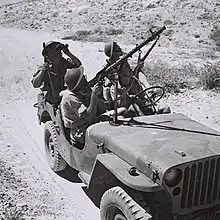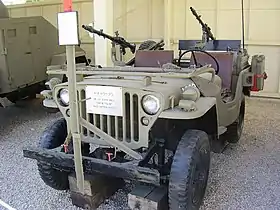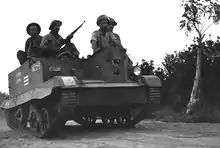Samson's Foxes
Samson's Foxes (Hebrew: שועלי שמשון, Shu'alei Shimshon) was an Israeli commando unit of the 1948 Arab–Israeli War. It was part of the 54th Battalion (commanded by Zvi Zur) of the Givati Brigade.[1] The unit participated in various battles on the southern front, including Operation GYS and the Battles of the Separation Corridor.
.jpg.webp)

Uri Avnery, later to become an outspoken advocate of Israeli-Palestinian Peace and a personal friend of Yasser Arafat, was a member of this unit and wrote a song called "Samson's Foxes" which was its unofficial anthem.
The modern Givati brigade named its reconnaissance companies after the 1940s unit in 1983. The companies were consolidated into a reconnaissance battalion of the same name in 2001, once again subordinate to the Givati Brigade.[2] Most of its work is confidential, though it is known to operate under the IDF's Gaza territorial command.
The unit's name is derived from the Bible. In Judges 15:4 the Judge Samson is described as having attached torches to the tails of three hundred foxes, leaving the panicked beasts to run through the fields of the Philistines, burning all in their wake.[3]



The fox logo of the Israeli Army's Southern Command is derived from the same story.
References
- Melamed, Sagi (2018-06-12). "Melamed: From Samson's foxes, to the kites of Gaza". The Canadian Jewish News. Retrieved 2019-04-10.
- Shual Foundation, (2006-2018)."Samson's Foxes Unit".Shual Foundation Retrieved 2019-04-14.
- Margalith, O., 1985. Samson's foxes. Vetus Testamentum, 35(Fasc. 2), pp.224-229.